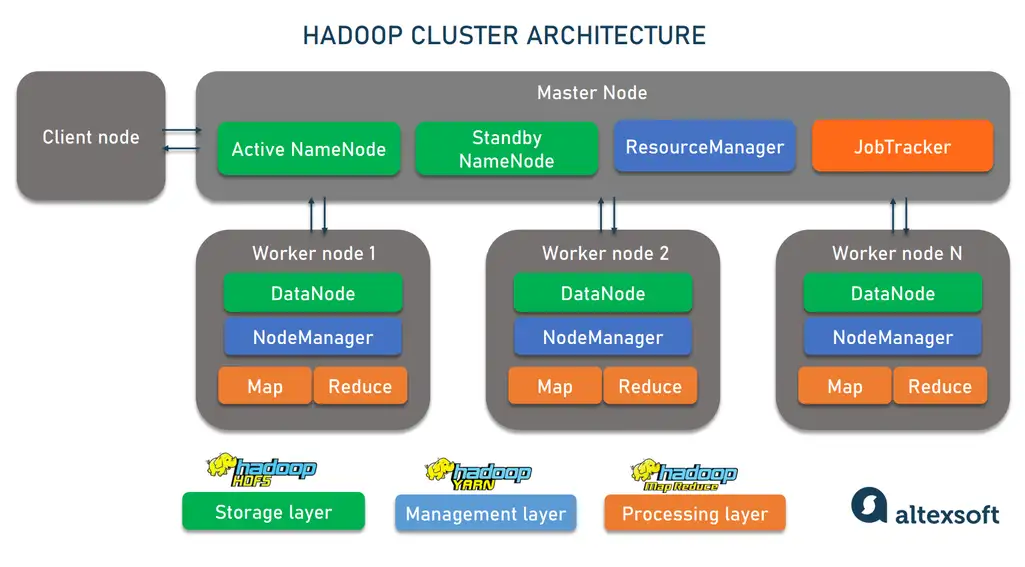The shared-nothing architecture
In Data Engineering, an Hadoop cluster is a group of computers, which can be called nodes, that act as a single system working on the same task. Each node is its own machine, with isolated memory and disk which is not shared between other nodes.
This is called the Shared Nothing Architecture, which enables better scalability, and makes the cluster fault-tolerant to any failing node, which can quickly recover, not impacting other nodes.

The cluster architecture
While nodes are independent, they all work for the inside the same structure. Inside a cluster, a node can take one of the three forms:
-
Worker nodes
Worker nodes are the bulk of all available nodes inside a cluster. They only process and perform the jobs assigned to them by the master node. They also run services to supervise and manage the its assigned job.
-
Master node
The master node are responsible for coordinating resource allocation and job assignments to worker nodes. The master node also is responsible for storing data in the HDFS.
-
Client node
The client node stays outside the master-worker hierarchy, acting as a gateway between the cluster and outer systems. They load the data into the cluster, and then fetch the results once it’s completed.